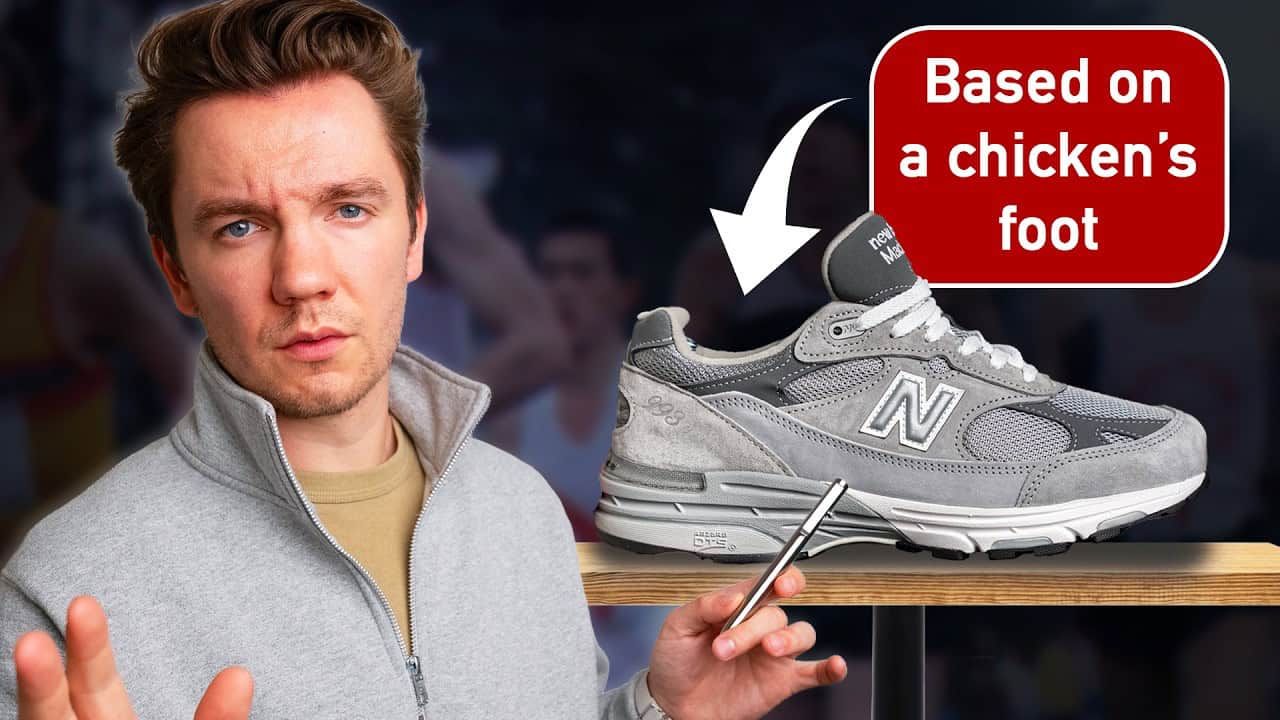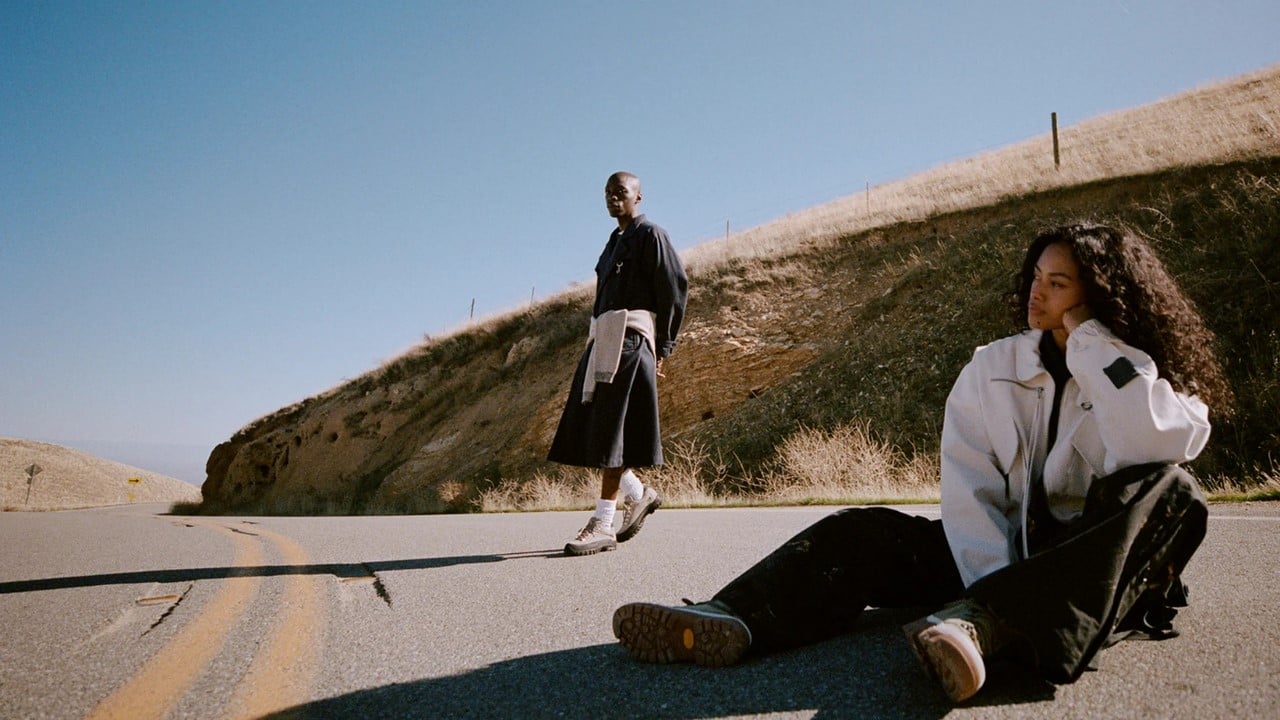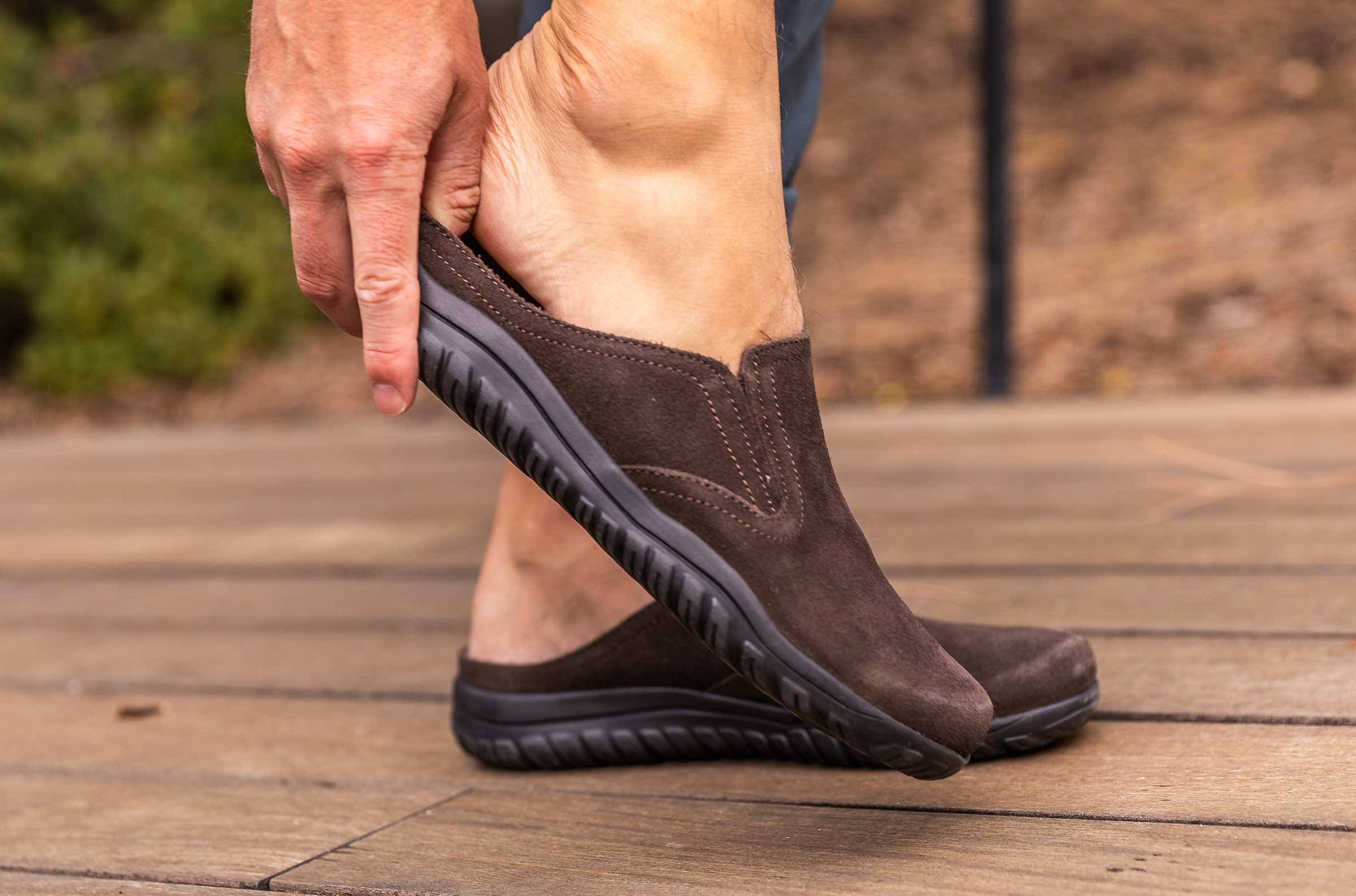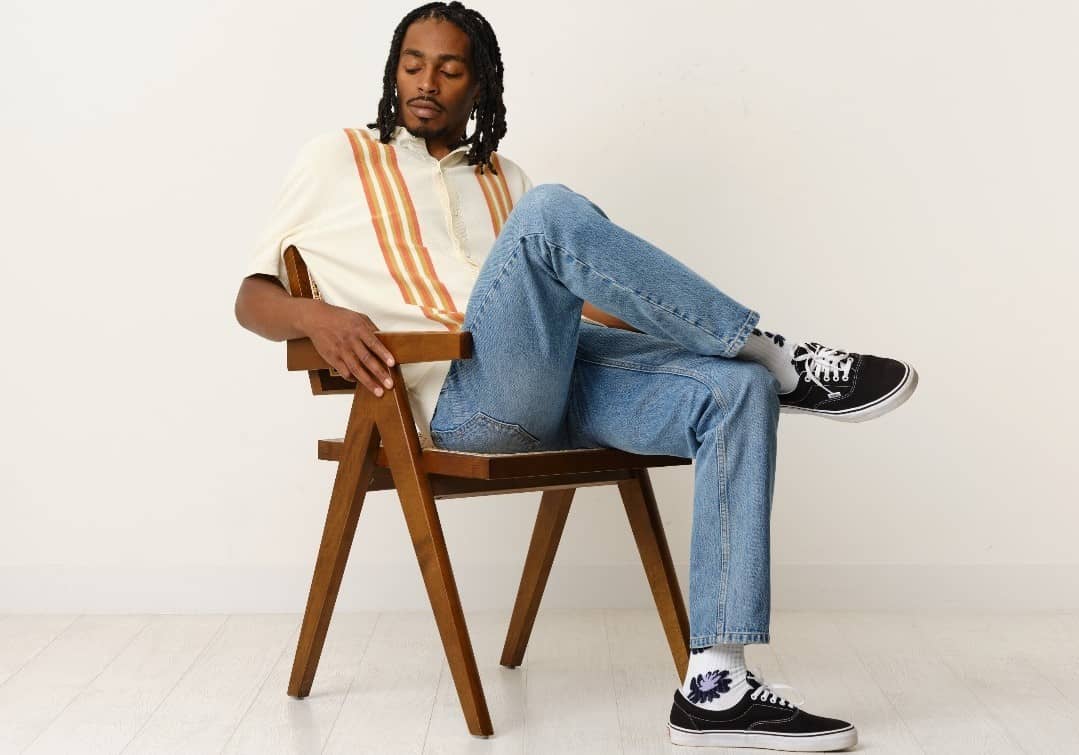The Evolution of Sex Part 3: On the Genetic Superiority of Women
Dec 24, 2025The 43-Year Journey Behind the New Balance 990
- Aug 14, 2025
- 0 Comments
807

We independently evaluate all recommended products and services. Any products or services put forward appear in no particular order. if you click on links we provide, we may receive compensation.
Setting the Scene: The Running Shoe Market in the 1980s
Picture this. It’s the 1980s and you’re looking for a new running sneaker to buy. Normally, you’d be looking at Nike, Brooks, Saucony, Asics, The Works. They all look similar. They all cost a similar amount and they’re all great — except if it’s the year 1982.
In 1982, New Balance blew the doors off of the running world. They released the pinnacle of running technology with a mind-numbing price of $100 — the most expensive running shoe on the market ever at that time. And their goal was simple: no matter the time it took or the money it cost, they’d make the most technologically advanced running shoe on the planet. The indisputable, diabolical, screaming mimi of footwear and rebellion. Personally, I think they should have put flames on the side of it — that’s very good for rebellion.
It had revolutionary features, iconic styling, unreal comfort, and one more thing that most brands weren’t — and still aren’t — willing to do: make their flagship running sneaker gray.
A Bold Color Choice
In this speed-sells industry, everybody’s trying to make their sneakers look like they’re on fire. You’re going super fast. Not New Balance. They chose bleak, dull, gray. I do like it though. I will say also, it made you run very fast.
And this is the result of 43 years of obsessive engineering — that same running sneaker. But you may have noticed one thing: nobody wears these sneakers to run anymore.
Why? Where in the formula did New Balance royally screw up?
Today’s Agenda
Number one: Let’s try and figure out why is New Balance so obsessed with one sneaker that they’ve worked on it for 43 years. What is going on?
Number two: After 43 years of obsessive research and development on one sneaker, this is what you get. Why? What does this sneaker do that’s worth 43 years of research and development?
Number three: No offense to New Balance, but how do you work on the perfect running sneaker for 43 years and end up with a sneaker that nobody runs in? What happened along the way that stopped that?
The Plan: Testing the Shoes
I’m also going to go for a five-mile run in these bad boys because while filming B-roll, I really like them as running shoes — better than my other ones. And I can feel the End Cap technology, which I think might be really helpful because I’ve been told since I was a kid that I have horrible running form. So, I’ve been trying to fix that. So, maybe this will help.
So, Why Is New Balance So Obsessive?
Okay, so. Why is New Balance so obsessive?
To answer that question, you really need to know that New Balance is more than just a sneaker brand. In fact, sneakers came second in the history of New Balance. This was not important for New Balance in the beginning at all. Nobody cared.
And New Balance is actually so important to the world of footwear that they are partially why your footwear is comfortable today. Someone else would have done it if they didn’t, but they got in early. It may sound like I’m making this up or trying to be dramatic or silly or something like that — but I’m not trying to be silly.
In the early 1900s, people were just coming to terms with the idea that maybe footwear had something to do with foot health. It’s important to note that in the early 1900s, people were just coming to terms with the idea that there could be a left and right shoe. Before that, you’d put a Lego block on your feet and go throughout your day, and there were flat boards.
So, people are like, “Wow, I really like comfortable footwear.” And three gentlemen bubble up to the top of the most important footwear comfort people ever in history. Birkenstock and a few other people should be there too, but we’re just going to completely ignore them today.
The League of Extraordinary Gentlemen
So, here is a league of extraordinary gentlemen:
- Dr. William Scholl — Dr. William Schollwas a pioneer of foot care and the founder of Dr. Scholl’s. He invented over 1,000 foot aids, carried a skeleton of a foot in his pocket, and often said, Early to bed, early to rise, work like hell, and advertise.
- Dr. Edward Munson — Dr. Edward Munson studied over 2,000 feet, wrote a book, and most notably developed the Munson Last, the basis of modern footwear shape as we know it today.
- William Riley — William Riley, an Irish immigrant who really liked chickens and had a chicken foot on his desk. He founded New Balance.
Everybody was kind of looking at the shape of a shoe or a boot and saying, “We could build it to the shape of a foot better, and we don’t need to just be standing on a flat leather board. That’s not that comfortable, right?”
The Chicken Foot Inspiration
William Riley, New Balance, was super inspired by a chicken’s foot — and I think this is what he was inspired by.
Above and below is a chicken’s foot. He was looking — I can’t do it with my hands (as you can see)— but he was saying chickens have really good balance because there’s something here. They have a little nub in the center of their foot that touches the ground or comes close to it.
So, he thought, “Well, our feet are like this. We probably should have something there too — insole support.” William Riley would show people a chicken’s foot and say, “Look, see that? There’s three points of balance? We’re doing that with our insoles.”
But, they didn’t make sneakers yet. So, when they added the insole into your shoe, you got a New Balance. New Balance. That is why New Balance is founded, and they are foundational to the world of footwear.
Boston Roots and Customer Base
What’s also mega important is where they were founded — my home state, baby — Boston, Massachusetts.
And you may be thinking, “Why the heck does it matter that they are founded in Boston, Massachusetts?” Well, if you don’t know, my home state is home to some of the greatest colleges in the world. MIT (side note: is… BEu good? I’m sorry if you went there — I don’t actually know how well that does) — also but Tufts, Harvard.
Also, Boston is one of the most powerful medical hub centers on the entire planet. So, you have to think about the customer that is probably going to be coming out of Boston.
Number one, no offense — very nerdy people.
Number two, also probably wealthy people.
And number three, they’re all kind of centered around the medical and the tech space and stuff like that.
No offense again, but really — nerds is the key here. So, the byproduct of that is a shoe that reflects that person.
The question is: What do you get when your main focus is orthopedics, you come from the nerd capital of the United States of America, Boston, Massachusetts, and your customers are mostly rich and they like to run, but in a healthy way? You get the greatest running sneaker ever.
The Year Is 1982: A Game-Changer in Running Shoes
So, the year is 1982. You’re a runner. You’re looking for what running sneaker you should buy. This is probably what you’re looking at — this is the competition: the Nike Terra TC or the Pegasus, the Brooks Chariot, the Saucony Jazz.
And then suddenly, New Balance releases their bomb — the 990 V1. This is actually not the 990 V1 — this is the 574, but it’s close enough. All the features that I want to talk about are still on the 574, and it also looks pretty similar to the 990 V1. So, I figured collectively we could all put on our imagination caps and just pretend this is that.
What Made the 990 V1 Revolutionary
- Heel Counter — Very important on virtually all footwear to have a heel counter to keep your heels stable. New Balance had an extra thermoplastic one for way more stability.
- End Cap Technology — Typical running shoes at that time used EVA foam, a very squishy, spongy foam you’ve probably worn a million times. This was really the breakthrough combination foam: squishy EVA under a polyurethane layer for extra stability.
- Premium Materials — New Balance did not compromise on a single material or manufacturing detail. Higher quality meshes, thicker but breathable, more rigid, and paired with nice suedes.
Finally, the most important thing — and a big reason they’re so stubborn — is they focused on the root of their brand: orthopedics, stability, foot comfort. This was for long running and healthy legs. Something doctors and podiatrists would want. And they didn’t get flashy — it spoke for itself. It was gray. Done.
The Rise… and the Decline
New Balance comes out with the 990 V1 and punches everybody in the mouth. Everyone’s like, “Holy crap, that worked. That’s an insane running sneaker. Good job.”
But then, like Rob Stark in Game of Thrones, who never lost a battle but met his downfall at the Red Wedding, New Balance faced their own slow downfall. While Nike, Adidas, and others sponsored major athletes like Michael Jordan, New Balance proudly said, “Endorsed by no one.”
Which, while edgy, basically meant… nobody likes us, not even our customers.
Over 43 years, they released the V1, V2, V3, V4, V5, and V6. But with each release, the 990 series faded from the running world.
The Reality Check
3.32 miles in, I’m running about 30 seconds slower than typical — though it’s also 100% humidity and about to rain, which is another weakness of these sneakers. At the start, I could feel how heavy and clunky they were. Now, they feel more normal.
After this five, I’m going to run a mile in my other running shoes — just some beat-up Brooks I’ve never thought about — and compare. Overall, you can feel these aren’t specifically built for running.
So, after 43 years of upgrades and tech improvements, you get the 990 V6 — and a lot of people Googling, “Can I run in my 990 V6?” Of course you can, but should you? Probably not.
Then again… I think I’m going to make these my running shoes forever.
Modern Updates and Weight Savings
But still, first thing modern running shoes did was remove a ton of leather and use the cage structure that we know today. So, we have a lot more mesh for breathability and a lot less leather. So, we’re saving on weight and making the shoes more comfortable overall.
My favorite detail is here, though. The 574 was built for hybrid running, so it’s a little bit gnalier if you were going off-road or something like that. But notice it’s one continuous piece of rubber. Nowadays, you segment the rubber. So, this is a very hard rubber at the bottom, obviously, ’cause you’re running and walking on it. But look, it’s in little pieces. So, it’s more flexible, takes off a lot of weight, you have better grip. I love that advancement. I think that’s very cool and clever.
And also, we still have our friend End Cap technology — changed a little bit, but still same basic principle. Cool stuff. Still made in the USA in Massachusetts. No compromise on materials ever. Still the same quality as the New Balance 990 V1, which was legendary.
The Harsh Truth: Not a Great Running Shoe Anymore
And yeah, that’s it. You’re left with a pretty lousy running sneaker. Nice.
Okay, at this point I’ve completed the five miles. It really killed me, but I want to get the Brooks on and see if there’s a difference. I think there’s a lot of stuff that feels different right from the jump, but mainly the biggest thing I’d say is if you have a competitive friend, you probably don’t want to wear these.
When Being “Too Good” Backfires
The main problem was the New Balance 990 V1 was actually too good. New Balance’s engineering and thoughtfulness and them, you know, kind of raising a certain finger to the crowd and saying, “We’re making a gray shoe that’s basic — so against the grain — that the V1 was too powerful to keep up with the rest of the running world.”
What the heck do I mean by that? Gray is vital to New Balance’s brand because it represents truly how stubborn they are in the grand scheme of things. Everybody’s releasing color. New Balance looks at them directly in the eye and says, “Screw you. Here’s gray.” That is iconic. That locked every single lock on the New Balance 990 series.
New Balance was the sneaker that Steve Jobs wore, and now the emoji on iPhones probably looks like at least the New Balance 990 V1 because it was so different. And Apple’s slogan was “Think Different” — it just blended perfectly with one of the biggest tech brands on the planet whose whole thing was “we don’t do it like anybody else.”
The Rebellious Gray
Whatever the most rebellious thing that you could do in the running world in the 1980s was — make a sneaker that doesn’t look like it’s going to catch on fire when you start running with it. So, you have an icon and you have an incredibly stubborn brand.
Nike also had an iconic shoe — or a bunch of them, obviously. You can look at the Pegasus, for example. Look how it started. Look at how it ended up. New Balance could have done the same thing, but they didn’t. This is more what a real running New Balance 990 V-whatever would have looked like.
Comparing Modern Running Shoe Design
And you can see all the added weight. We have all this leather. We have the applied logo. This is all very heavy. This (the Brooks shoe) is all just heat treated on — basically melted and fused together. This is all knit, very breathable all along the sides. And this is dramatically lighter than this big boy, which I didn’t really notice until I was holding the two next to each other. But it’s a very big difference. Oh yeah. Okay. It’s very, very different.
This [the Brooks shoe] is very marshmallowy and soft, and there’s no End Cap, so it’s more comfortable on my heels and way, way lighter. You could feel it so much in the upper with the stiffness and everything. They were like, “Well, we make this in the US. Our gray leather is iconic, so we can’t get rid of the leather even though that adds weight. It doesn’t dry fast. It doesn’t really make sense on running sneakers anymore.”
Sticking with Tradition
It’s kind of like, you know, when someone is very unwilling to change something, even though it’s no longer really effective anymore, but they stick with it and they kind of double down on it. New Balance is doing that here. And they were like, “You know what? We’re going to wait. One day someone will catch on to this and they’ll really like it.”
And guess who came a-thundering? A certain someone who may like to mow lawn or may be doing taxes or may be a dad. Usually a dad. That’s who came along because all of a sudden it was like, “Hey, wait a minute. This gray at one point was rebellious, but now it’s pretty calm. It doesn’t feel like I’m wearing my son’s sneakers.” So, I like that. And they’re really focused on comfort and stability. I like that, too.
And my feet are getting wider. My arches are collapsing as I get older, whatever it may be. And guess what? These are the leaders in being mega stable but not offensive. And I like that.
So, all of a sudden you have the world’s greatest dad sneaker. And New Balance will never stop evolving their dad shoe. So there will be a V12, a V20. As technology changes, New Balance will have dads’ backs and their feet.
Watch this article
Final Verdict
All right. So overall, to my big surprise, I really thought I was going to make these my running shoes. I’m not going to. And I thought it would be the foam on the bottom, but what it really is is nowadays everybody runs in glorified socks. Like this is just insanely comfortable, when this — there’s so much stiffness and weight. It’s really not a running shoe.
I kind of was like, well, we’re being picky now if you want elite running times, but it’s just not nearly as nice as this is. Like night and day difference. So, I would highly recommend the shoe for a lifestyle shoe, for a walking shoe and stuff like that. But no, it’s completely morphed.
I really, really wanted this to be my cool made-in-USA heritage running shoe, but this is the one time I’m like, “Yep, I could see why you’d want a modern running shoe.”
This article was adapted from Michael Kristy’s video on The Iron Snail, with edits from FashionBeans, and was reviewed by Michael to ensure the integrity of his original content. Watch the full video here.
The Iron Snail is a men’s fashion vlog (and now article series!) starring a young man named Michael and featuring a snail no bigger than a quarter. The two are set on taking over the world of fashion by creating a clothing line to end all clothing lines. Until then, we’re here to tell you EVERYTHING you need to know about the best clothing out there, from the highest quality raw denim jeans to the warmest jackets to the sturdiest boots…the Iron Snail has got you covered.
Publisher: Source link







